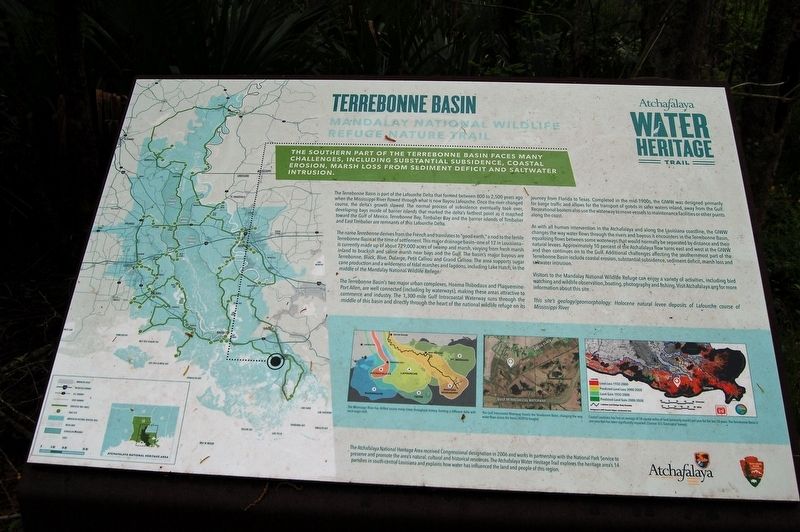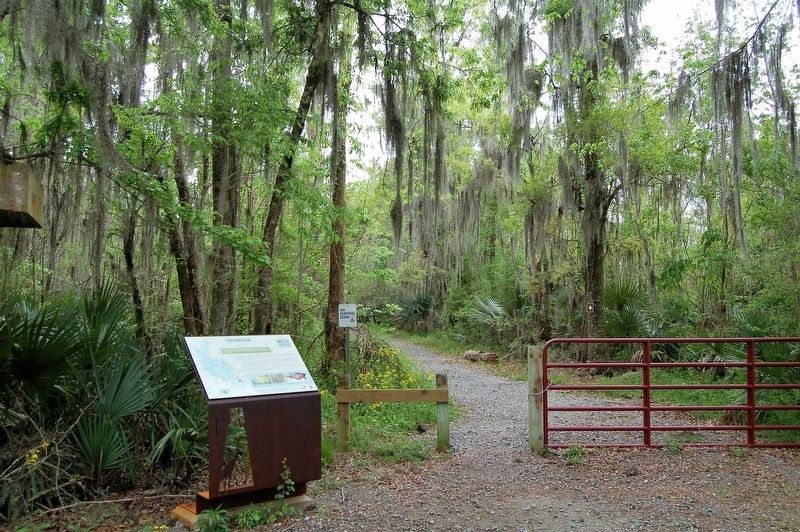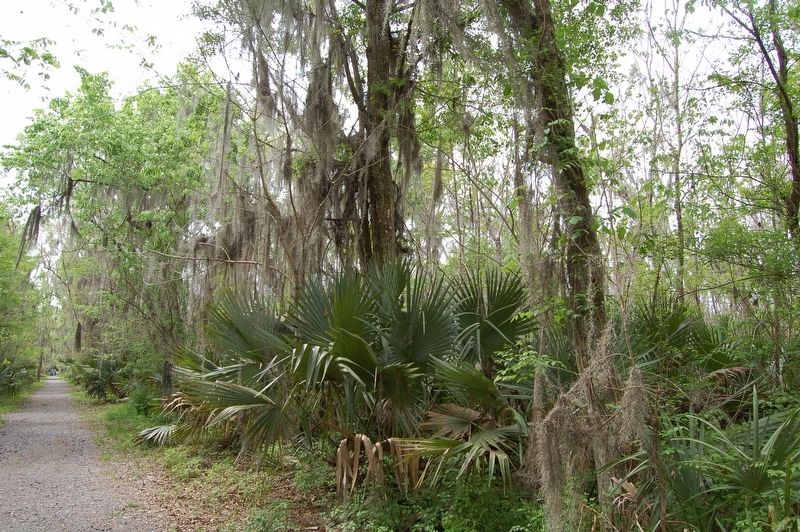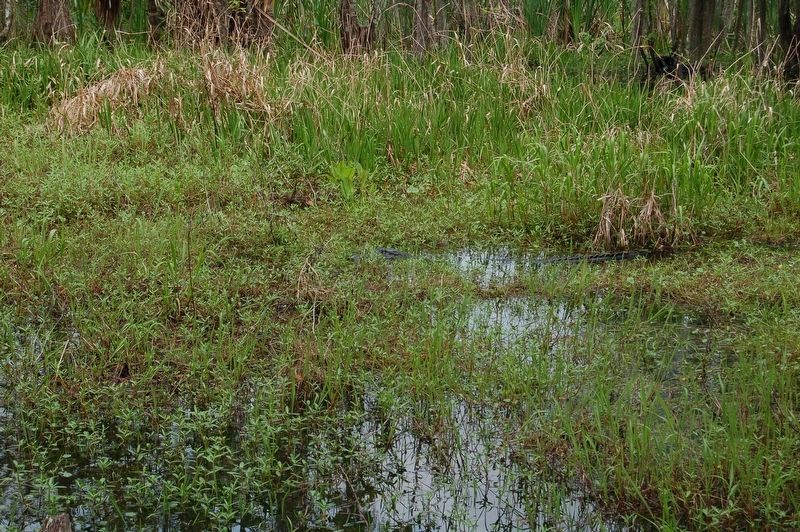Terrebonne Basin
Mandalay National Wildlife Refuge Nature Trail
— Atchafalaya Water Heritage Trail —
The southern part of the Terrebonne Basin faces many challenges, including substantial subsidence, coastal erosion, marsh loss from sediment and saltwater intrusion.
The Terrebonne Basin is part of the Lafourche Delta that formed between 800 to 2,500 years ago when the Mississippi River flowed through what is now Bayou Lafourche. Once the river changed course, the delta’s growth slowed. The normal process of subsidence eventually took over, developing bays inside of barrier islands that marked the delta’s farthest point as it marched toward the Gulf of Mexico. Terrebonne Bay, Timbalier Bay and the barrier islands of Timbalier and East Timbalier are remnants of this Lafourche Delta.
The name Terrebonne derives from the French and translates to “good earth,” a nod to the fertile Terrebonne Basin at the time of settlement. This major drainage basin—one of 12 in Louisiana—is currently made up of about 729,000 acres of swamp and marsh, varying from fresh marsh inland to brackish and saline marsh near bays and the Gulf. The basin’s major bayous are Terrebonne, Black, Blue, Dularge, Petit Calliou and Grand Calliou. The area supports sugar cane production and a wilderness of tidal marshes and lagoons, including Lake Hatch, in the middle of the Mandalay National Wildlife Refuge.
The Terrebonne
Basin’s two major urban complexes, Houma-Thibodaux and Plaquemine-Port Allen, are well connected (including by waterways), making these areas attractive to commerce and industry. The 1,300-mile Gulf Intracoastal Waterway runs through the middle of this basin and directly through the heart of the national wildlife refuge on its journey from Florida to Texas. Completed in the mid-1900s, the GIWW was designed primarily for barge traffic and allows for the transport of goods in safer waters inland, away from the Gulf. Recreational boaters also use the waterway to move vessels to maintenance facilities or other points along the coast.As with all human intervention in the Atchafalaya and along the Louisiana coastline, the GIWW changes the way water flows through the rivers and bayous it encounters in the Terrebonne Basin, equalizing flows between some waterways that would normally be separated by distance and their natural levees. Approximately 10 percent of the Atchafalaya flow turns east and west at the GIWW and then continues on to the Gulf. Additional challenges affecting the southernmost part of the Terrebonne Basin include coastal erosion, substantial subsidence, sediment deficit, marsh loss and saltwater intrusion.
Visitors to the Mandalay National Wildlife Refuge can enjoy a variety of activities, including bird watching and wildlife observation, boating, photography
and fishing.Visit Atchafalaya.org for more information about this site.
This site’s geology/geomorphology: Holocene natural levee deposits of Lafourche course of Mississippi River.
Erected by State of Louisiana and National Park Service.
Topics and series. This historical marker is listed in these topic lists: Environment • Waterways & Vessels. In addition, it is included in the Atchafalaya Water Heritage Trail series list.
Location. 29° 33.029′ N, 90° 47.428′ W. Marker is in Houma, Louisiana, in Terrebonne Parish. Marker is on Rue de la Manson near Black Bayou Drive, on the right when traveling south. Marker is at terminus of Rue de la Manson. Touch for map. Marker is at or near this postal address: 3599 Bayou Black Drive, Houma LA 70360, United States of America. Touch for directions.
Other nearby markers. At least 8 other markers are within 6 miles of this marker, measured as the crow flies. Orange Grove (approx. 3˝ miles away); Southdown Plantation (approx. 4 miles away); Southdown High School (approx. 4.2 miles away); YRF-4C Phantom II (approx. 5 miles away); Fifth Districts High School (approx. 5 miles away); Saint Francis de Sales Church (approx. 5.1 miles away); Terrebonne Parish Courthouse Square Oaks (approx. 5.2 miles away); 1834-1934 (approx. 5.2 miles away). Touch for a list and map of all markers in Houma.
Also see . . .
Credits. This page was last revised on October 20, 2023. It was originally submitted on March 17, 2018, by Cajun Scrambler of Assumption, Louisiana. This page has been viewed 309 times since then and 25 times this year. Photos: 1, 2, 3, 4. submitted on March 17, 2018.



